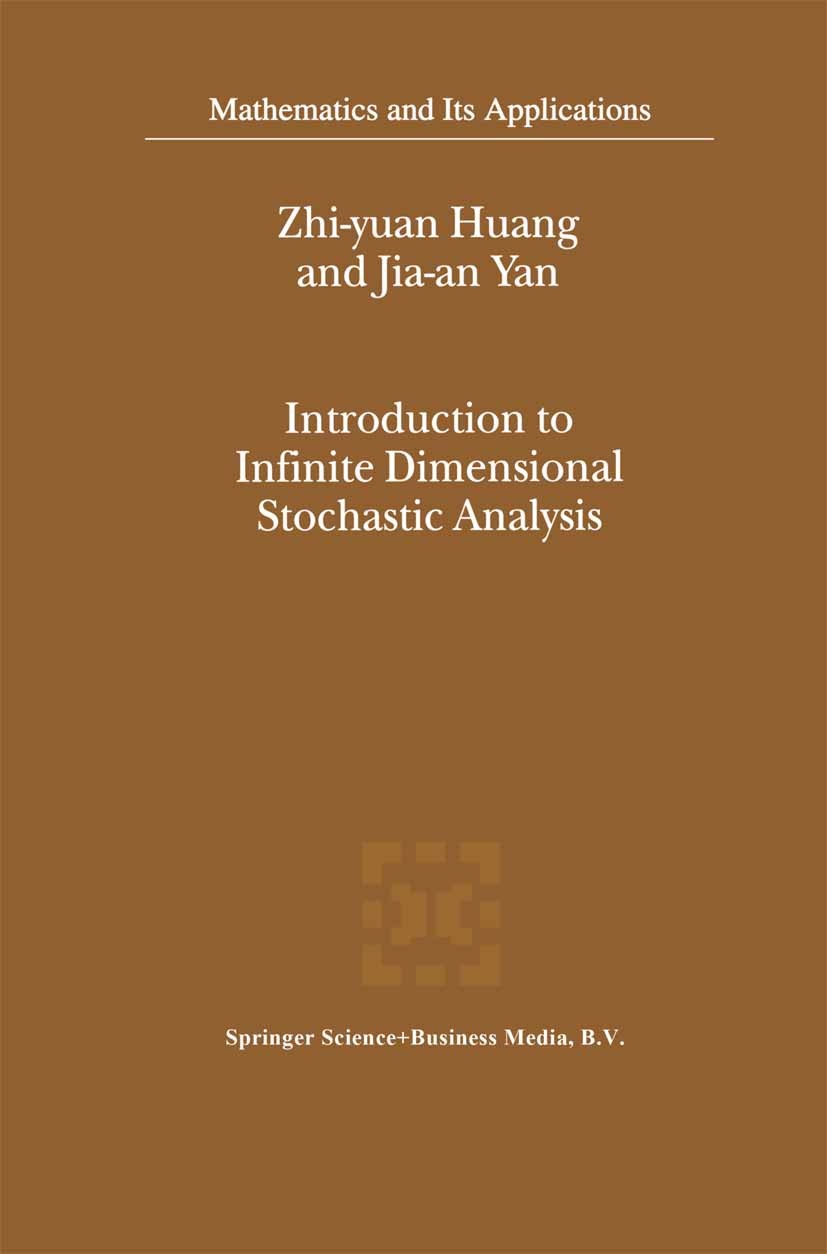| 书目名称 | Introduction to Infinite Dimensional Stochastic Analysis | | 编辑 | Zhi-yuan Huang,Jia-an Yan | | 视频video | http://file.papertrans.cn/474/473773/473773.mp4 | | 丛书名称 | Mathematics and Its Applications | | 图书封面 |  | | 描述 | The infinite dimensional analysis as a branch of mathematical sciences was formed in the late 19th and early 20th centuries. Motivated by problems in mathematical physics, the first steps in this field were taken by V. Volterra, R. GateallX, P. Levy and M. Frechet, among others (see the preface to Levy[2]). Nevertheless, the most fruitful direction in this field is the infinite dimensional integration theory initiated by N. Wiener and A. N. Kolmogorov which is closely related to the developments of the theory of stochastic processes. It was Wiener who constructed for the first time in 1923 a probability measure on the space of all continuous functions (i. e. the Wiener measure) which provided an ideal math ematical model for Brownian motion. Then some important properties of Wiener integrals, especially the quasi-invariance of Gaussian measures, were discovered by R. Cameron and W. Martin[l, 2, 3]. In 1931, Kolmogorov[l] deduced a second partial differential equation for transition probabilities of Markov processes order with continuous trajectories (i. e. diffusion processes) and thus revealed the deep connection between theories of differential equations and stochastic processes | | 出版日期 | Book 2000 | | 关键词 | Operator theory; Probability theory; Stochastic calculus; Variation; abstract harmonic analysis; distribu | | 版次 | 1 | | doi | https://doi.org/10.1007/978-94-011-4108-6 | | isbn_softcover | 978-94-010-5798-1 | | isbn_ebook | 978-94-011-4108-6 | | copyright | Springer Science+Business Media Dordrecht 2000 |
The information of publication is updating

|
|
 |Archiver|手机版|小黑屋|
派博传思国际
( 京公网安备110108008328)
GMT+8, 2025-11-20 14:16
|Archiver|手机版|小黑屋|
派博传思国际
( 京公网安备110108008328)
GMT+8, 2025-11-20 14:16


